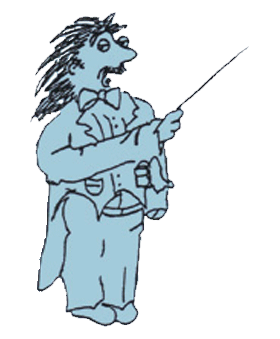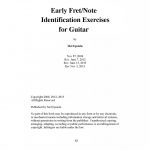Metronome Instruction Guide
The purpose of a metronome is to enable you to stabilize the pace at which you play a piece of music.
Metronomes are available in the traditional wooden wind-up style, as battery-powered electronic devices and through the internet. They all function similarly.
Metronome Only
1. Set the metronome to a moderate speed, such as 90. By the way, 90 means 90 clicks per minute. Typically, a click is considered to represent one beat.
2. Start it and just listen. Try to anticipate each next click.
3. Tap your hand, foot or head or cluck your tongue to the pace of the clicks. Again, try to anticipate each next click.
4. Next, make one sound on your instrument for each respective click of the metronome. Attempt to match the pace of the clicks.
With no instrument, tap your right leg with your RH. After you’ve done this for a number of times, do the same using your LH. Then, tap both hands at the same time. Then, alternate your tapping between the two hands.
On a keyboard or piano, first play one key repetitively with one finger of one hand. I suggest using your RH (Right Hand) 2nd finger on the D above Middle C
Now play one key repetitively with one finger of the other hand. I suggest using your LH (Left Hand) 2nd finger on the D above Bass C.
Now play both hands at the same time.
Now alternate your playing between the two hands. I suggest using your RH 2nd finger on the D above Middle C and your LH 2nd finger on the D above Bass C.
On a string instrument, pick (pluck) one string (or strum a group of strings or a chord) repetitively. I suggest using an open string, such as the open G (3rd string) on a guitar or banjo or the open D (3rd) string on a violin (3rd course on a mandolin).
With your voice, sing one sound repetitively. I suggest using an open vowel sound, such as “lah”. Choose a pitch that is easy for you to sing and comfortably in your vocal range.
6. Next, alternate making two different sounds on your instrument for each respective click of the metronome. Again, attempt to match the pace of the clicks. Think of the sounds in groups of two.
With no instrument, tap your right leg with your RH two times. After you’ve done this for a number of times, do the same using your LH. Then, tap both hands at the same time. Then, alternate your tapping between the two hands.
On a keyboard or piano, first play two different keys with the fingers of one hand. I suggest using your RH 2nd finger on the D above Middle C and your RH 3rd finger on the E next to it.






